How and what is the radiator flushing
In the private sector, and especially in apartments of high-rise buildings, from time to time there is a need for the prevention of plumbing fixtures and heating circuits, which include flushing the heating radiator.
It is not possible to set any tight deadlines, as in most cases it depends on the water used in this case, that is, on the amount of salts and alkalis that are in it, and then settle on the inner walls of the instruments.
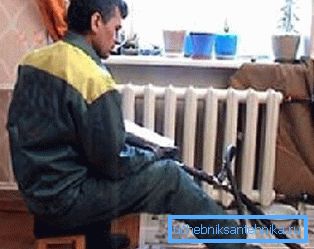
To remove such formations, various reagents are used, which we will tell you about and also offer a video demonstration in this article.
Clean radiators
Reagents
Note. For washing batteries, some suggest using the most incredible liquids, for example, they suggest washing with citric acid, caustic soda, whey, and even coca-cola. Of course, this is also a kind of reagents, but why reinvent the wheel if you can always buy the right product in the store.
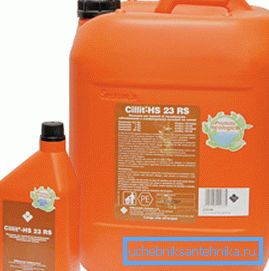
- The Cillit-HS reagents can differ from each other, but almost all of them can be used to flush batteries, where the circuit's operating temperature does not exceed 80? C, that is, for any, since higher temperatures are possible except by testing the system.
When processing the tank with Cillit-HS reagent, corrosion, lime deposits and sludge deposits decompose, and these are exactly the elements that settle on the walls and interfere with the circulation of the coolant, which means that Cillit-HS fits almost perfectly.
- A big plus of the drug is that it can be used not only for cast iron, but also the instruction allows it to be used for steel and aluminum, which means that it is applicable in the private sector, where steel, bimetallic and aluminum are usually mounted heating radiators. If desired, this procedure can be done independently, without the help of experts.
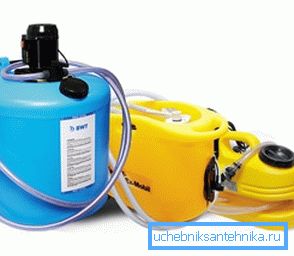
- Such equipment for flushing the radiator is advantageous in that there is a circulating pump installed there and there is a supply container with hoses for connection, and with the purchase there are also reagents of the same name attached.
Practice has shown that such a unit is quite simple to use, its parts and components are resistant to acid effects, and the reagent itself has heat resistance. The washing process here is carried out fairly quickly, especially since you can do without removing the battery, the equipment itself can be used for years.
How to wash
Note. There are two ways of flushing - with the help of a pump with a reagent or with your own hands, when each battery is washed separately.
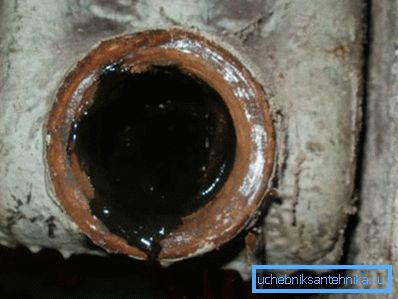
When the heating system is made of metal circuit (steel pipes), in such cases it is very convenient to use automatic equipment for cleaning from sludge and lime deposits of the brand Cillit.
In addition, when it comes to multi-apartment multi-storey building, in such cases the question of how to flush the radiator is solved with the help of a large motor pump, that is, flushing is carried out simultaneously in all the apartments.
In this case, everything is done very simply - a reagent is injected into the heating circuit instead of water, for example, the same Cillit or caustic soda, phosphoric or phosphoric acid, etc., although Cillit is usually not used by utilities - the price of a solution of acids or alkalis costs much less .
After pumping the required fluid, its circulation is activated with the help of a pump, which lasts for several hours. Upon completion of the process, the dirty liquid is drained, and water is poured into the system and it is pressurized.
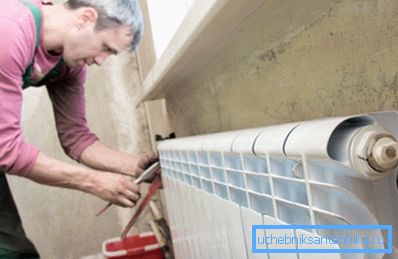
To flush radiators in an apartment or house one at a time, you first need to turn off the taps on the supply and return pipes, which are installed as stop valves of this battery.
If the valves on a specific device are missing, then you will have to drain the water completely from the system, and this is possible only in the private sector or with autonomous heating, but, however, there should be no heat carrier in the pipes. If necessary, clean all threaded connections from cuttings.
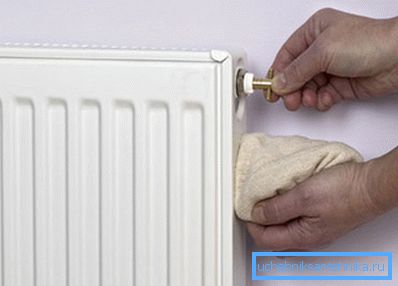
When you have disconnected the supply and return pipes and have not yet removed the radiator from the brackets, unscrew and remove the non-engaged end brackets to open all the flushing holes.
After that, in a bathtub or in another tank (if you live in the private sector), dilute concentrated radiator flushing inside and out, as we have said, it is most convenient for you to use one of the Cillit-HS types for this purpose - the ratio of water and reagent indicated on the packaging capacity.
Now remove the battery from the wall and flush it from the inside with the pressure of the water from the hose - so you can remove the sludge that does not hold the walls.
After that, immerse the radiator in the reagent dissolved in water, only for this purpose it is desirable to use a pallet - you can scratch either the battery itself, or, if it is made of cast iron, develop a tank or a bath with it. Leave the device in this liquid for the whole night or at least 4-5 hours, after which it can be removed and rinsed with running water.
Conclusion
Of course, Cillit-HS is not the only means for radiator flushing - you can also use alkalis and acids, which utilities use when cleaning the contours of apartment buildings. But they have an advantage, since they do not come into direct contact with the reagent, and its contact with the skin is undesirable, so you need to use personal protective equipment to work.